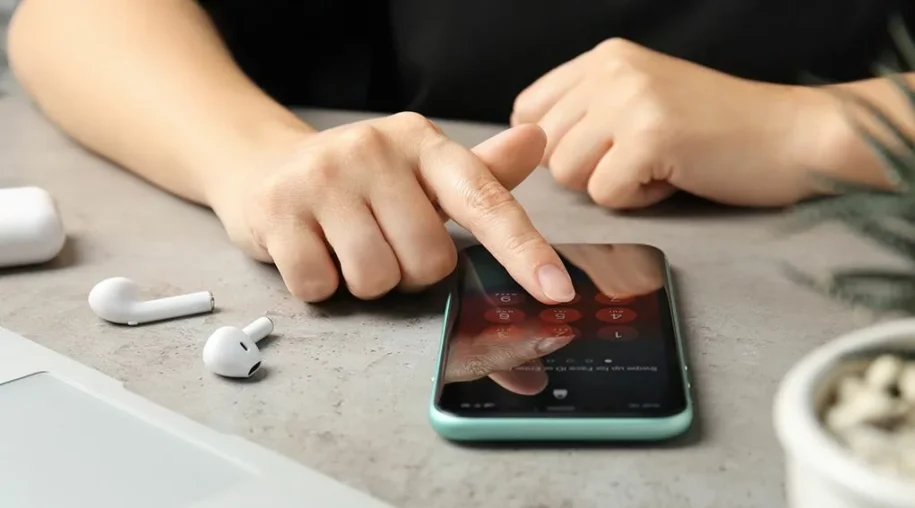14
How to Reset Your iPhone Passcode: It can be very annoying to forget your iPhone password, but don’t worry! You can get back into your device even if you don’t remember the new code or your old one if you just changed it recently. By following the steps in this helpful guide, you’ll be able to easily get back into your iPhone after it has been locked. To help you find the best option, we’ll talk about a number of different ways to do things, such as using iCloud or iTunes.
There’s no need to worry if you get lost without your iPhone. To change your passcode and get back control of your device, just follow our steps. Let’s get things going! First, make sure you can get to a computer with iTunes or another Apple device with iCloud so you can change your iPhone’s passcode. Then, either use iCloud to reset your passcode or iTunes to recover your device by following the steps in our guide.
After you finish the steps, you’ll be able to set up a new password and get back into your iPhone. To keep your device safe, pick a passcode that’s easy for you to remember but hard for other people to figure out how to Reset Your iPhone Passcode. If you want to know more information about this visit Apple Official Website.
What is an iPhone passcode?
An iPhone password is like a secret key that only you can know. It keeps other people from seeing your phone. It’s just a string of letters or numbers that you enter to lock your device. You’ll have to type in your PIN every time you want to use your iPhone after you turn this feature on. This protects your friends, messages, photos, and even your money. Anyone who shouldn’t be messing with your phone can’t do it either.
There are cool new ways to unlock your iPhone, like using your face or fingerprint with Face ID or Touch ID. These are cool because they protect your phone from other people while making it easy to get into. Basically, the password on your iPhone is very important for keeping your private information safe and secret. Only you know the code, so no one else can use your iPhone. It’s like having your own secret code.
How to Reset Your iPhone Passcode
If you remember your old passcode
- Go to Settings.
- Tap on Face ID & Passcode or Touch ID & Passcode.
- Enter your current passcode.
- Scroll down and tap on Change Passcode.
- Enter your old passcode again.
- Enter your new passcode twice.
- Your passcode will be updated.
Forgot your passcode and have a recent backup
- Go to a trusted device (computer, iPad, etc.).
- Sign in with your Apple ID.
- Select your iPhone.
- Click on Erase iPhone.
- Follow the on-screen instructions to complete the erase process.
- Once erased, you can restore your data from a backup or set up your iPhone as new.
If you forgot your passcode and don’t have a backup
- Put your iPhone in recovery mode. Follow specific steps based on your iPhone model. Refer to detailed instructions on Apple’s official website.
- Connect your iPhone to your computer using iTunes or Finder after entering recovery mode.
- In iTunes or Finder, choose your iPhone and click on “Restore iPhone.”
- A prompt will appear, asking you to erase your iPhone and set it up as new.
Importance of Resetting Your iPhone Passcode
- Access: Resetting the passcode lets you get back into your iPhone and use its features if you forget your current password and are locked out of your device.
- Unauthorized Access: If you reset your passcode on a regular basis, you can keep people who aren’t supposed to be there from getting long-term access to your device. This is especially important if you’ve given your password to someone else or think someone got it without your permission.
- Safeguarding Private Data: Your iPhone has a lot of private data on it, like contacts, messages, emails, photos, and banking information. By changing your password, you can keep this private information safe from people who don’t need to see it.
- Emergency Situations: If you need to quickly let trusted people into your device in an emergency, you can reset the passcode to give them temporary access without putting your device’s security at risk in the long run.
- Compliance: As part of their security measures, some organizations or security policies may need passcodes to be reset on a regular basis. Resetting your iPhone’s PIN is one way to make sure you’re following these rules.
Conclusion
In conclusion, it may seem hard to change your iPhone’s PIN, but it’s actually very easy if you do it the right way. Either iCloud or iTunes can be used to easily change your passcode and get back into your device, keeping it safe. Being ready with your Apple ID information is important because you will need it for the restart process. In addition, you might want to turn on Touch ID or Face ID to make things easier and safer in the future.
If you have any issues along the way, don’t be afraid to ask Apple Support for help. If you’re patient and get the right help, you’ll soon be able to use your iPhone without having to worry about the password. Don’t forget to use your device’s safety features, and enjoy the peace of mind that comes from knowing you have full control over your iPhone. By doing these things, you can make sure that using your device is easy and safe, protecting your safety and personal information.
Question and Answer
What should I do if someone else knows my iPhone passcode?
Change your PIN right away if you think someone knows it. This will protect your device and your password. Invaders can’t get in now, and your privacy and safety are safe.
Can I use a alphanumeric passcode instead of a 4-digit or 6-digit passcode?
Certainly, you are able to create a password for your iPhone that is a combination of letters and numbers, which makes it far more secure. Simply navigate to the settings menu on your iPhone to configure it.
How can I prevent forgetting my iPhone passcode in the future?
Certainly, you are able to create a password for your iPhone that is a combination of letters and numbers, which makes it far more secure. Simply navigate to the settings menu on your iPhone to configure it.
You Might Be Interested In










Leave a Reply